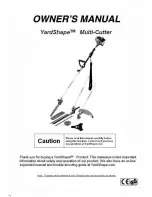
RP0575-2001
4
NACE International
composition,
resistivity,
and
temperature
of
the
electrolyte largely dictate which material is most
suitable.
4.2.4.1 Aluminum alloys are commonly used in
brines
with
resistivities
below
100
ohm-cm.
Aluminum’s lower driving potential, compared with
that of magnesium, leads to lower current output
and longer life.
Generally, more than one
aluminum anode is required to provide current
output equivalent to that of magnesium.
4.2.4.1.1 Consideration must be given to
selection of the proper aluminum alloy (pure
aluminum should not be used as an anode) to
ensure
adequate
protection
at
optimum
economy.
The electrochemical properties
(potential and current capacity) of aluminum
anodes are dependent on the alloy, the
electrolyte composition, and the electrolyte
temperature.
Temperatures above 49°C
(120°F) can reduce the current capacity of
aluminum anodes.
4.2.4.2 Magnesium alloys are commonly used in
brines
with
resistivities
above
100 ohm-cm.
Magnesium’s higher driving potential, compared
with that of aluminum, leads to higher current
output and shorter life. If magnesium anodes are
used in low-resistivity electrolytes, current output
should be controlled by resistors in the external
circuits.
4.2.4.3 Zinc alloys are not commonly used in
vessels because they may show a decrease in
potential with increase in electrolyte temperature
and may possibly become cathodic to steel at
temperatures in the range of 54°C (130°F).
4.3 Internally Coated Vessels
4.3.1 Cathodic
protection
mitigates
corrosion
at
coating holidays.
4.3.2 Excessive cathodic protection potentials may
cause coating damage.
Generally, at polarized
potentials more negative than -1.05 to -1.10 V
(copper/copper sulfate reference electrode [CSE]),
excessive hydrogen can be formed and cause coating
damage.
________________________________________________________________________
Section 5: Anode Installation
5.1 Vertical Suspension
5.1.1 Anodes must be spaced to distribute current
uniformly to the vessel walls and bottom, and at a
depth that assures that some anodes are submerged
regardless of water level.
Either type of anode
(galvanic or impressed current) can be installed in this
manner.
5.1.2 Impressed current anodes must be suspended
from a suitable hanger (deck mount), properly isolated
to prevent grounding of the lead wire to the vessel.
5.1.3 Galvanic anodes should be electrically isolated
where current monitoring is contemplated.
5.2 Internally Supported
5.2.1 Galvanic anodes may be placed on supports on
the vessel floor and isolated from the vessel. Anode
leads
can
be
brought
out
through
watertight
connections
welded
in
the
clean-out
plate
and
connected back to the vessel wall.
Shunts and
resistors may then be installed in the external anode
leads to monitor or regulate anode performance.
5.2.2 Alternatively, galvanic anodes may be bolted or
welded to brackets permanently affixed to the vessel
surface.
However, this type of installation does not
allow any method for monitoring the anode output or
knowledge of anode consumption other than by visual
inspection.
5.3 Vessel Wall Placement
5.3.1 Galvanic or impressed current anodes can be
installed
horizontally
in
compartmented
vessels
through mountings welded into the side of the vessel.
5.3.2 Anode heads for installation in nipples are most
commonly made of a nonmetallic material designed to
withstand the temperature and pressure within the
vessel.
The shield portion of the head must be of
sufficient length to prevent anode grounding to the
vessel or excessive current discharge close to the
anode entrance port. In all cases, actual lengths of the
nipple and the anode head, as well as the positioning
of the nipple on the curved surfaces, must be related in
design in order to prevent this undesired current
discharge. Anode entrance ports should be installed
during fabrication of vessels.
Materials and welding
procedures should be consistent with primary vessel
design.
5.3.3 When
steel
anode
mounting
heads
are
considered, they must be properly designed to provide
isolation between the anode mounting head and the
vessel.
Содержание CP 1
Страница 1: ...CP 1 Cathodic Protection Tester Course Manual February 2005 NACE International 2000 ...
Страница 265: ......
Страница 266: ......
Страница 267: ......
Страница 268: ......
Страница 301: ...RP0169 2002 32 NACE International ISBN 1 57590 035 1 ...
Страница 535: ...TM0101 2001 24 NACE International ISBN 1 57590 137 4 ...
















































